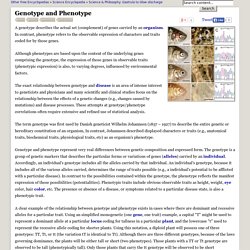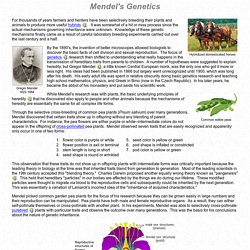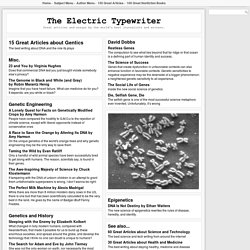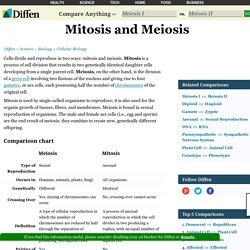

Genotype and Phenotype - Traits, Genetic, Particular, and Individual. Traits genetic particular individual A genotype describes the actual set (complement) of genes carried by an organism.

In contrast, phenotype refers to the observable expression of characters and traits coded for by those genes. Although phenotypes are based upon the content of the underlying genes comprising the genotype, the expression of those genes in observable traits (phenotypic expression) is also, to varying degrees, influenced by environmental factors. The exact relationship between genotype and disease is an area of intense interest to geneticists and physicians and many scientific and clinical studies focus on the relationship between the effects of a genetic changes (e.g., changes caused by mutations) and disease processes. These attempts at genotype/phenotype correlations often require extensive and refined use of statistical analysis. Genotype and phenotype represent very real differences between genetic composition and expressed form.
Books Gilbert, Scott F. Jorde, L.B., J. AgBiosafety at UNL - Biotech Basic The Preocess of Plant Genetic Engineering. The improvement of crops with the use of genetics has been occurring for years.

Traditionally, crop improvement was accomplished by selecting the best looking plants/seeds and saving them to plant for the next year’s crop. Once the science of genetics became better understood, plant breeders used what they knew about the genes of a plant to select for specific desirable traits. This type of genetic modification, called traditional plant breeding, modifies the genetic composition of plants by making crosses and selecting new superior genotype combinations. Traditional plant breeding has been going on for hundreds of years and is still commonly used today. Plant breeding is an important tool, but has limitations. That already exist in that species. DNA and Mutations. What Is Mutation? Mutation is a natural process that changes a DNA sequence.

And it is more common than you may think. As a cell copies its DNA before dividing, a "typo" occurs every 100,000 or so nucleotides. That's about 120,000 typos each time one of our cells divides. Most commonly, a single base is substituted for another. Sometimes a base is deleted or an extra base is added. People commonly use the terms "mutant" and mutation" to describe something undesirable or broken. AgBiosafety at UNL - Biotech Basic The Preocess of Plant Genetic Engineering. Basic Principles of Genetics: Mendel's Genetics. Mendel's Genetics For thousands of years farmers and herders have been selectively breeding their plants and animals to produce more useful hybrids .

It was somewhat of a hit or miss process since the actual mechanisms governing inheritance were unknown. Learn.Genetics™ 15 Great Articles about Gentics. The best writing about DNA and the role its plays Genetics and History Sleeping with the Enemy by Elizabeth Kolbert What changed in fully modern humans, compared with Neanderthals, that made it possible for us to build up these enormous societies, and spread around the globe, and develop the technology that I think no one can doubt is unique to humans?

The Search for Adam and Eve by John Tierney She was not the only woman on earth, nor necessarily the most attractive or maternal. Race Without Color by Jared Diamond Why race based on genetics has little to do with skin colour. The Royal We by Steve Olson. GCSE Bitesize: Growth. Mitosis and Meiosis - Comparison Chart, Video and Pictures. Cells divide and reproduce in two ways: mitosis and meiosis.

Mitosis is a process of cell division that results in two genetically identical daughter cells developing from a single parent cell. Meiosis, on the other hand, is the division of a germ cell involving two fissions of the nucleus and giving rise to four gametes, or sex cells, each possessing half the number of chromosomes of the original cell. Mitosis is used by single-celled organisms to reproduce; it is also used for the organic growth of tissues, fibers, and membranes. 2141_CircSyst_vs_OtherSystemsN.jpg (JPEG Image, 1870 × 2257 pixels) - Scaled (44%) DNA Replication Animation - Super EASY. Protein Synthesis.
mDNA replication zoom. How Cells Obtain Energy from Food - Molecular Biology of the Cell - NCBI Bookshelf. Unknown. Websites for unit plan lessons 6-10. Eukaryotic Cell vs Prokaryotic Cell. The distinction between prokaryotes and eukaryotes is considered to be the most important distinction among groups of organisms.

Eukaryotic cells contain membrane-bound organelles, such as the nucleus, while prokaryotic cells do not. Differences in cellular structure of prokaryotes and eukaryotes include the presence of mitochondria and chloroplasts, the cell wall, and the structure of chromosomal DNA. Prokaryotes were the only form of life on Earth for millions of years until more complicated eukaryotic cells came into being through the process of evolution.
Definition of eukaryotes and prokaryotes Prokaryotes (pro-KAR-ee-ot-es) (from Old Greek pro- before + karyon nut or kernel, referring to the cell nucleus, + suffix -otos, pl. Eukaryotes (IPA: [juːˈkæɹɪɒt]) are organisms whose cells are organized into complex structures by internal membranes and a cytoskeleton. Differences Between Eukaryotic and Prokaryotic Cells References Share this comparison: Structure of a typical animal cell png. Plant cell structure svg svg. Unknown. Eukaryotic Cell (animal) Prokeriotic.